Carl E. Olson's Blog, page 59
January 29, 2015
G.K. Chesterton on the Metaphysics of Julianne Moore

G.K. Chesterton on the Metaphysics of Julianne Moore | Carl E. Olson | CWR blog
don't tend to care much at all about the deep thoughts and philosophical utterances of movie stars, celebrities, and other bright lights in the silly secular sky, but I somehow ended up reading this recent Hollywood Reporter piece about actress Julianne Moore. It follows the same trajectory of so many other profiles of Hollywood types: bad childhood, rise to fame, growing awareness of a deep inner void: "In her early 30s, Julianne Moore felt lost. Her professional life was soaring, her personal life shrinking."
So, course, the talented actress (and she is certainly talented) turned to religion. Sort of: "Unsure what to do, Moore turned to a therapist, who got straight to the point: She must give her private life its due." And:
"The idea that you're the center of your own narrative and that you can create your life is a great idea," she says, referring to a notion in one of her favorite books, Little Women. "I totally believe it. I've been really lucky, but I feel I've completely created my own life."
Also, a bit later:
Turbulence is not unknown to her; she acknowledges that a peripatetic childhood left its share of instability, and she returns over and over to the theme of impermanence. She says she doesn't believe in God and has a strong sense that meaning is imposed on a chaotic world.
"I learned when my mother died five years ago that there is no 'there' there," she reflects. "Structure, it's all imposed. We impose order and narrative on everything in order to understand it. Otherwise, there's nothing but chaos."
Moore's need for therapy and subsequent claim that she has "created" her own life reminded me a passage by G. K. Chesterton, in an essay titled, "Upon This Rock":
The sacramental system is everywhere based on the idea that certain material acts are mystical acts; are events in the spiritual world. This mystical materialism does divide us from all those forms of idealism that hold all good to be inward and invisible and matter to be unworthy to express it. It is needless to note how this applies to the water of baptism, the oil of unction, and so on.
But I am deliberately taking the sacrament which our world has most misunderstood; and, strangely enough, it is that one which is least material and most spiritual, consisting of spoken words expressing the most secret thoughts. Of all the sacraments it is, in the modern jargon, the most psychological. And the proof of it is that even the people who abolished it a few centuries ago found that they had to invent a new imitation of it a few years ago. They told the people to go to a new priest, often without credentials, and make confession generally without absolution, and they called it psychoanalysis.
Catholicism would say that the lack of the confessional had produced a modern congestion and stagnation of secrets so morbid as to be reaching the verge of madness.
Part of the madness, it seems to me, is in the glaring inconsistency of Moore's metaphysics, if you will.
January 28, 2015
New: "Radical Discipleship: Consecrated Life and the Call to Holiness" by Francis Cardinal Arinze
Now available from Ignatius Press:
Radical Discipleship: Consecrated Life and the Call to Holiness
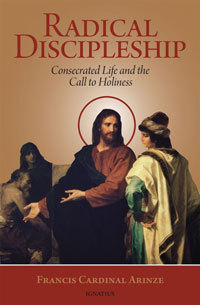
by Francis Cardinal Arinze HTML
Since 2015 has been deemed the Year of the Consecrated Life by Pope Francis, this work by Cardinal Arinze is a very timely one-for this year, and for any time. A reflection on the consecrated life, Radical Discipleship represents a beautiful way for faithful Catholics to participate in this Church-wide theme and celebration by coming to a deeper understanding of the consecrated life.
Radical Discipleship illuminates the vocation of the consecrated state and its presence in the Body of Christ, beginning with a brief look at its origins in Scripture and the early Church. The work then reflects upon the following:
The different forms this radical life takes
The population of consecrated persons in the Church today
The recognition that the consecrated life has received from the Church
The vows of Poverty, Chastity and Obedience taken by all consecrated persons
Community life as it pertains to consecrated life
The prophetic aspect of the consecrated life
The impact of the consecrated state on the Church community and on society
Alongside these fascinating topics, Cardinal Arinze addresses some of the problems faced by consecrated people, and how these difficulties have led some to abandon this vocation. In examining the struggles specific to the consecrated state, the Cardinal seeks to encourage other consecrated persons to persevere in their vocation. He further calls the entire Church to support the consecrated life and those who have dedicated themselves to Christ in this way.
Although filled with substantive information, even the most involved sections are presented in an engaging, readable and reflective style. The book is not, as the Cardinal explains, "a dissertation based on deep research on the theology and canon law on the consecrated life". Radical Discipleship is rather a reflection, written for consecrated people, other laity and clergy alike, and offers wonderful material for thought and prayer. It is Cardinal Arinze's hope that his work will make the consecrated life "better understood, loved, lived and promoted".
Cardinal Francis Arinze grew up in Nigeria, became the youngest Bishop in the world, and the first African Cardinal to head a Vatican office, the Congregation for Divine Worship and the Discipline of the Sacraments. His biography, God's Invisible Hand, was published by Ignatius Press, as were his books The Layperson’s Distinctive Role, and Meeting Jesus and Following Him.
Saint Thomas Aquinas, Priest and Doctor of the Church

Saint Thomas Aquinas, Priest and Doctor of the Church | Various Authors | January 28, 2015 | The Memorial of Saint Thomas Aquinas
From Saint Thomas Aquinas: "The Dumb Ox" by G.K. Chesterton
Thomas was a huge heavy bull of a man, fat and slow and quiet; very mild and magnanimous but not very sociable; shy, even apart from the humility of holiness; and abstracted, even apart from his occasional and carefully concealed experiences of trance or ecstasy.
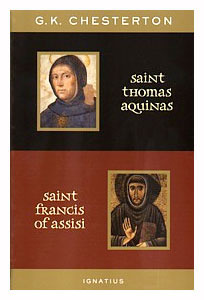
St. Francis was so fiery and even fidgety that the ecclesiastics, before whom he appeared quite suddenly, thought he was a madman. St. Thomas was so stolid that the scholars, in the schools which he attended regularly, thought he was a dunce. Indeed, he was the sort of schoolboy, not unknown, who would much rather be thought a dunce than have his own dreams invaded, by more active or animated dunces. This external contrast extends to almost every point in the two personalities.
It was the paradox of St. Francis that while he was passionately fond of poems, he was rather distrustful of books. It was the outstanding fact about St. Thomas that he loved books and lived on books; that he lived the very life of the clerk or scholar in The Canterbury Tales, who would rather have a hundred books of Aristotle and his philosophy than any wealth the world could give him. When asked for what he thanked God most, he answered simply, "I have understood every page I ever read." St. Francis was very vivid in his poems and rather vague in his documents; St. Thomas devoted his whole life to documenting whole systems of Pagan and Christian literature; and occasionally wrote a hymn like a man taking a holiday.
They saw the same problem from different angles, of simplicity and subtlety; St. Francis thought it would be enough to pour out his heart to the Mohammedans, to persuade them not to worship Mahound. St. Thomas bothered his head with every hair-splitting distinction and deduction, about the Absolute or the Accident, merely to prevent them from misunderstanding Aristotle. St. Francis was the son of a shopkeeper, or middle class trader; and while his whole life was a revolt against the mercantile life of his father, he retained none the less, something of the quickness and social adaptability which makes the market hum like a hive. In the common phrase, fond as he was of green fields, he did not let the grass grow under his feet. He was what American millionaires and gangsters call a live wire. It is typical of the mechanistic moderns that, even when they try to imagine a live thing, they can only think of a mechanical metaphor from a dead thing. There is such a thing as a live worm; but there is no such thing as a live wire. St. Francis would have heartily agreed that he was a worm; but he was a very live worm. Greatest of all foes to the go-getting ideal, he had certainly abandoned getting, but he was still going.
St. Thomas, on the other hand, came out of a world where he might have enjoyed leisure, and he remained one of those men whose labour has something of the placidity of leisure. He was a hard worker, but nobody could possibly mistake him for a hustler. He had something indefinable about him, which marks those who work when they need not work. For he was by birth a gentleman of a great house, and such repose can remain as a habit, when it is no longer a motive. But in him it was expressed only in its most amiable elements; for instance, there was possibly something of it in his effortless courtesy and patience.
Every saint is a man before he is a saint; and a saint may be made of every sort or kind of man; and most of us will choose between these different types according to our different tastes. But I will confess that, while the romantic glory of St. Francis has lost nothing of its glamour for me, I have in later years grown to feel almost as much affection, or in some aspects even more, for this man who unconsciously inhabited a large heart and a large head, like one inheriting a large house, and exercised there an equally generous if rather more absent-minded hospitality. There are moments when St. Francis, the most unworldly man who ever walked the world, is almost too efficient for me.
From Guide to Thomas Aquinas 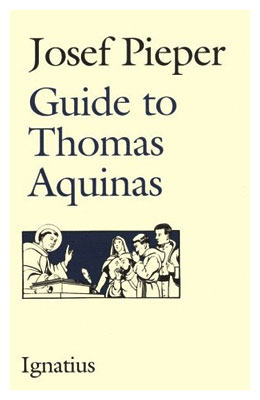 by Josef Pieper
by Josef Pieper
In the midst of the tremendous demands made upon him by his teaching, and challenged by questions shot at him from every side--in the midst of all this intellectual commotion, Thomas wrote his great systematic works. Some of them are the more or less direct fruit of his teaching itself. But his greatest systematic works, the Summa theologica and the Summa Against the Pagans, were not. His works--the sheer physical labor they represent is in itself imposing—can probably be explained in only one way: that Thomas was present in the body amid the fret and fever of those times, especially of the Parisian disputes. but that all the while he dwelt in an inner cloister of his own, that his heart was wholly untouched and untroubled, concentrated upon the totality of reality; that wrapped in the silence that filled the innermost cell of his soul he simply did not hear the din of polemics in the foreground; that he listened to something beyond it, something entirely different, which was the vital thing for him.
Perhaps we may say that several elements contributed to his imperturbability: a mystic (in the narrower sense) rapture; the capacity to give himself entirely to a subject (once, dictating at night. he simply did not notice that the candle in his hand had burned down and was singeing his fingers); and finally a concentration, acquired by schooling of the will, which made it possible for him to dictate to three or four scribes simultaneously—different text, of course. In this way and under such conditions he produced, in a lifetime of not quite fifty years, that vast body of work which in printed editions fills thirty folio volumes.
From The Unity of Philosophical Experience 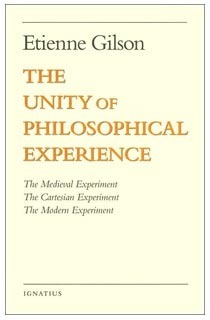 by Etienne Gilson
by Etienne Gilson
While so many men were trying to base philosophy on theological foundations, a very simple and modest man as putting everything in its place. His name was Thomas Aquinas, and he was saying things so obviously true that, from his time down to our own day, very few people have been sufficiently self-forgetful to accept them. There is an ethical problem at the root of our philosophical difficulties; for men are most anxious to find truth, but very reluctant to accept it. We do not like to be cornered by rational evidence, and even when truth is there, in its impersonal and commanding objectivity, our greatest difficulty still remains; it is for me to bow to it in spite of the fact that it is not exclusively mine, for you to accept it though it cannot be exclusively yours. In short, finding out truth is not so hard; what is hard is not to run away from truth once we have found it. When it is not a "yes but", our "yes" is often enough a "yes, and..."; it applies much less to what we have just been told than to what are about to say. The greatest among philosophers are those who do not flinch in the presence of truth, but welcome it with the simple words: yes, Amen.
St. Thomas Aquinas was one of the latter, clear-sighted enough to know truth when he saw it, humble enough to bow to it in its presence. His holiness and his philosophy sprang from the same source: a more than human eagerness to give way to truth; but he was surrounded by men who did not like to do that, at least not to the same degree, so that, even after him, everything went on as if truth had remained unsaid. Yet his ideas were clear and simple. Himself a theologian, St. Thomas had asked the professors of theology never to prove an article of faith by rational demonstration, for faith is not based on reason, but on the word of God, and if you try to prove it, you destroy it. He had likewise asked the professors of philosophy never to prove a philosophical truth by resorting to the words of God, for philosophy is not based on Revelation, but on reason, and if you try to base it on authority, you destroy it. In other words, theology is the science of those things we are received by faith from divine revelation, and philosophy is the knowledge of those things which flow from the principles of natural reason. Since their common source is God, the creator of both reason and revelation, these two sciences are bound ultimately to agree; but if you really want them to agree, you must first be careful not to forget their essential difference. Only distinct things can be united; if you attempt to blend them, you inevitably lose them in what is not union, but confusion.
From Sermon in a Sentence: St. Thomas Aquinas 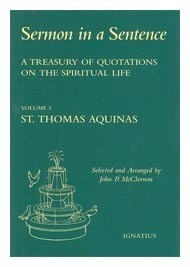 selected and arranged by John P. McClernon
selected and arranged by John P. McClernon
St. Thomas may be best known as a great intellect and Christian thinker, but his holy life was equally impressive. Although graced with such an incredibly mastery of knowledge, in his personal life he exemplified a simple, reserved, humble servant of God. He was known to rise early in the morning, with the usual practice of going to confession, saying Mass, then immediately attending another Mass. The rest of his day he normally spent reading, praying, writing, and teaching. Thomas liked to go often to a church and spent quiet time there with Jesus in the tabernacle. His heart was drawn like a magnet to prayer whenever confronted with a theological or intellectual question that challenged him. God once revealed to St. Catherine of Siena, the great fourteenth-century Dominican Doctor and mystic, that "Thomas learned more from prayer than from study." Since he had a profound devotion to Mass and the Holy Eucharist, and it was not uncommon for his Dominican brethren to find him so deeply moved and absorbed during the service that he would stop, needing to be roused to continue. The sacredness of the Mass and his corresponding love of God simply overwhelmed him.
All those who knew Thomas found him to be considerate, kind, and patient with other people. He exhibited no trace of vanity or pride, so often found in those of great intellectual ability or personal achievements. Friendship, according to Thomas, is the greatest model for understanding and learning charity. He was never known to lose his temper, even in the midst of heated disputations, and never uttered anything unkind or humiliating to those opposing his views.
From Defenders of the Faith in Word and Deed 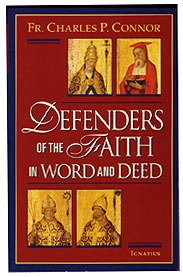 by Fr. Charles P. Connor
by Fr. Charles P. Connor
Saint Thomas surely knew controversy in his life, but he did not write the Summa Theologica as a work of refutation. Rather, he wished to tell the entire story of God and the universe he created as the Church understands it through Scripture, tradition, and the use of reason. Aquinas was not the most widely read philosopher of his day (John Duns Scotus supposedly had a larger following), but no one captured God, the Divine Intelligence, in quite the same way. In an amazingly logical and sequential pattern, Thomas traces man's creation and fall from grace and the tremendous events enabling creatures to return to God, namely, the Incarnation of Christ, his subsequent Redemption of the world, the Church he established, the sacraments he gave to his Church, and the grace he continually bestows on men as the most vital means to achieve their eternal salvation.
St. Thomas Aquinas and the Thirteenth Century

St. Thomas Aquinas and the Thirteenth Century | Josef Pieper | From the opening chapter of Guide to Thomas Aquinas | Ignatius Insight
So bound up is the life of St. Thomas Aquinas with the thirteenth century that the year in which the century reached its mid-point, 1250, was likewise the mid-point of Thomas' life, though he was only twenty-five years old at the time and still sitting at the feet of Albertus Magnus as a student in the Monastery of the Holy Cross in Cologne. The thirteenth century has been called the  specifically "Occidental" century. The significance of this epithet has not always been completely clarified, but in a certain sense I too accept the term. I would even assert that the special quality of "Occidentality" was ultimately forged in that very century, and by Thomas Aquinas himself. It depends, however, on what we understand by "OccidentaIity." We shall have more to say on this matter.
specifically "Occidental" century. The significance of this epithet has not always been completely clarified, but in a certain sense I too accept the term. I would even assert that the special quality of "Occidentality" was ultimately forged in that very century, and by Thomas Aquinas himself. It depends, however, on what we understand by "OccidentaIity." We shall have more to say on this matter.
There exists the romantic notion that the thirteenth century was an era of harmonious balance, of stable order, and of the free flowering of Christianity. Especially in the realm of thought, this was not so. The Louvain historian Fernand van Steenberghen speaks of the thirteenth century as a time of "crisis of Christian intelligence"; [1] and Gilson comments: "Anybody could see that a crisis was brewing." [2]
What, in concrete terms, was the situation? First of all we must point out that Christianity, already besieged by Islam for centuries, threatened by the mounted hordes of Asiatics (1241 is the year of the battle with the Mongols at Liegnitz)—that this Christianity of the thirteenth century had been drastically reminded of how small a body it was within a vast non-Christian world. It was learning its own limits in the most forceful way, and those limits were not only territorial. Around 1253 or 1254 the court of the Great Khan in Karakorum, in the heart of Asia, was the scene of a disputation of two French mendicant friars with Mohammedans and Buddhists. Whether we can conclude that these friars represented a "universal mission sent forth out of disillusionment with the old Christianity," [3] is more than questionable. But be this as it may, Christianity saw itself subjected to a grave challenge, and not only from the areas beyond its territorial limits.
For a long time the Arab world, which had thrust itself into old Europe, had been impressing Christians not only with its military and political might but also with its philosophy and science. Through translations from the Arabic into Latin, Arab philosophy and Arab science had become firmly established in the heart of Christendom—at the University of Paris, for example. Looking into the matter more closely, of course, we are struck by the fact that Arab philosophy and science were not Islamic by origin and character. Rather, classical ratio, epitomized by Aristotle, had by such strangely involved routes come to penetrate the intellectual world of Christian Europe. But in the beginning, at any rate, it was felt as something alien, new, dangerous, "pagan."
During this same period, thirteenth-century Christendom was being shaken politically from top to bottom. Internal upheavals of every sort were brewing. Christendom was entering upon the age "in which it would cease to be a theocratic unity," [4] and would, in fact, never be so again. In 1214 a national king (as such) for the first time won a victory over the Emperor (as such) at the Battle of Bouvines. During this same period the first religious wars within Christendom flared up, to be waged with inconceivable cruelty on both sides. Such was the effect of these conflicts that all of southern France and northern Italy seemed for decades to be lost once and for all to the corpus of Christendom. Old monasticism, which was invoked as a spiritual counterforce, seems (as an institution, that is to say, seen as a whole) to have become impotent, in spite of all heroic efforts to reform it (Cluny, Cîteaux, etc.). And as far as the bishops were concerned—and here, too, of course, we are making a sweeping statement—an eminent Dominican prior of Louvain, who incidentally may have been a fellow pupil of St. Thomas under Albertus Magnus in Cologne, wrote the following significant homily: In 1248 it happened at Paris that a cleric was to preach before a synod of bishops; and while he was considering what he should say, the devil appeared to him. "Tell them this alone," the devil said. "The princes of infernal darkness offer the princes of the Church their greetings. We thank them heartily for leading their charges to us and commend the fact that due to their negligence almost the entire world is succumbing to darkness." [5]
But of course it could not be that Christianity should passively succumb to these developments. Thirteenth-century Christianity rose In Its own defense, and in a most energetic fashion. Not only were great cathedrals built in that century; It saw also the founding of the first universities. The universities undertook, among other things, the task of assimilating classical ideas and philosophy, and to a large extent accomplished this task.
There was also the whole matter of the "mendicant orders," which represented one of the most creative responses of Christianity. These new associations quite unexpectedly allied !hemselves with the institution of the university. The most important university teachers of the century, in Paris as well as in Oxford, were all monks of the mendicant orders. All in all, nothing seemed to be "finished"; everything had entered a state of flux. AIbertus Magnus voiced this bold sense of futurity in the words: Scientiae demonstrativae non omnes factae sunt, sed plures restant adhuc inveniendae; most of what exists in the realm of knowledge remains still to be discovered. [6]

The mendicant orders took the lead in moving out into the world beyond the frontiers of Christianity. Shortly after the nuddle of the century, while Thomas was writing his Summa Against the Pagans, addressed to the mahumetistae et pagani, [7] the Dominicans were founding the first Christian schools for teaching the Arabic language. I have already spoken of the disputation between the mendicant friars and the sages of Eastern faiths in Karakorum. Toward the end of the century a Franciscan translated the New Testament and the Psalms into Mongolian and presented this translation to the Great Khan. He was the same Neapolitan, John of Monte Corvino, who built a church alongside the Impenal Palace in Peking and who became the first Archbishop of Peking.
This mere listing of a few events, facts, and elements should make it clear that the era was anything but a harmonious one. There is little reason for wishing for a return to those times—aside from the fact that such wishes are in themselves foolish.
Nevertheless, it may be said that in terms of the history of thought this thirteenth century, for all its polyphonic character, did attain something like harmony and "classical fullness." At least this was so for a period of three or four decades. Gilson speaks of a kind of "serenity." [8] And although that moment in time is of course gone and cannot ever again be summoned back, it appears to have left its traces upon the memory of Western Christianity, so that it is recalled as something paradigmatic and exemplary, a kind of ideal spirit of an age which men long to see realized once more, although under changed conditions and therefore, of course, in some altogether new cast.
Now as it happens, the work of Thomas Aquinas falls into that brief historical moment. Perhaps it may be said that his work embodies that moment. Such, at any rate, is the sense in which St. Thomas' achievement has been understood in the Christian world for almost seven hundred years; such are the terms in which it has repeatedly been evaluated. Not by all, to be sure (Luther called Thomas "the greatest chatterbox" among the scholastic theologians [9]); but the voices of approbation and reverence have always predominated. And even aside from his written work, his personal destiny and the events of his life unite virtually all the elements of that highly contradictory century in a kind of "existential" synthesis. We shall now speak of these matters at greater length, and in detail.
First of all, a few remarks regarding books.
The best introduction to the spirit of St. Thomas is, to my mind, the small book by G. K. Chesterton, St. Thomas Aquinas. [10] This is not a scholarly work in the proper sense of the word; it might be called journalistic—for which reason I am somewhat chary about recommending it. Maisie Ward, co-owner of the British-American publishing firm which publishes the book, writes in her biography of Chesterton [11] that at the time her house published it, she was seized by a slight anxiety. However, she goes on to say, Étienne Gilson read it and commented: "Chesterton makes one despair. I have been studying St. Thomas all my life and I could never have written such a book." Still troubled by the ambiguity of this comment, Maisie Ward asked Gilson once more for his verdict on the Chesterton book. This time he expressed himself in unmistakable terms: "I consider it as being, without possible comparison, the best book ever written on St. Thomas. . . . Everybody will no doubt admit that it is a 'clever' book, but the few readers who have spent twenty or thirty years in studying St. Thomas Aquinas, and who, perhaps, have themselves published two or three volumes on the subject, cannot fail to perceive that the so-called 'wit' of Chesterton has put their scholarship to shame. . . . He has said all that which they were more or less clumsily attempting to express in academic formulas." Thus Gilson. I think this praise somewhat exaggerated; but at any rate I need feel no great embarrassment about recommending an "unscholarly" book.
ENDNOTES:
[1] Fernand van Steenberghen, Le XIIIe siècle. In Forest, van Steenberghen, and de Gandillac, Le Mouvement doctrinal du Xle au XIVe siècle. Fliche-Martin, Histoire de l'Eglise vol. 13 (Paris, 1951), p. 303.
[2] Etienne Gilson, History of Christian Philosophy in the Middle Ages (London and New York, 1955), p. 325.
[3] Friedrich Reer, Europäische Geistesgeschichte (Stuttgart, 1953), p.147.
[4] Marie-Dominique Chenu, Introduction à l'etude de St. Thomas d'Aquin (Paris—Montreal, 1950), p. 13.
[5] Gustav Schnürer, Kirche und Kultur im Mittelalter (Paderborn, 1926), II, p. 441.
[6] Liber primus Posteriorum Analyticorum, tract. 1, cap. 1 Opera Omnia. Ed. A. Borgnet (Paris, 1890), tom. 2, p. 3.
[7] C. G. 1,2.
[8] Gilson, History, p. 325.
[9] Joseph Lortz, Die Reformation in Deutschland (Freiburg im Breisgau, 1939), I, p. 352.
[10] Heidelberg, 1956.
[11] Maisie Ward, Gilbert Keith Chesterton (New York, 1943), p. 620.
Editor's note: Pieper's book was originally published in English in 1962 by Pantheon Books. The Ignatius Press edition was published in 1991.
Related Ignatius Insight Links/Articles:
• Saint Thomas Aquinas, Priest and Doctor of the Church | Various Authors
• The Roots of Culture | by Fr. James V. Schall, S.J. | The Foreword to Josef Pieper's Leisure: The Basis of Culture
• Philosophy and the Sense For Mystery | An excerpt from For The Love of Wisdom: Essays On the Nature of Philosophy
Other Books & Resources Relating to St. Thomas Aquinas:
• Summa Theologica | St. Thomas Aquinas
• Sermon in a Sentence, Vol. 5: Thomas Aquinas | Selected/arranged by John P. McClernon
• Guide to Thomas Aquinas | Josef Pieper
• The Human Wisdom of St. Thomas | Josef Pieper
Saint Thomas Aquinas: "The Dumb Ox" | G. K. Chesterton
• Summa of the Summa | Peter Kreeft
• Shorter Summa | Peter Kreeft
• John Paul II & St. Thomas Aquinas | John Paul II
• St. Thomas Aquinas Commentary on Colossians | St. Thomas Aquinas
• Thomas Aquinas and the Liturgy | David Berger
• Trinity in Aquinas | Gilles Emery
• The Quiet Light: A Novel about St. Thomas Aquinas | Louis de Wohl
• St. Thomas Aquinas and the Preaching Beggars | Brendan Larnen, Milton Lomask, and Leonard Everett Fisher
Josef Pieper (1904-1997) is widely considered to be one of the finest Catholic philosophers of the 20th century. He was educated in the Greek classics and the writings of St. Thomas Aquinas. He was a professor of philosophy at the University of Münster in Germany. His books have earned international acclaim from both Catholic and non-Catholic scholars. Read much more about his life and work on his IgnatiusInsight.com Author Page.
Engaging the Academy From the Heart of the Church

(Photos: www.saintbenedictforum.org)
Engaging the Academy From the Heart of the Church | Carl E. Olson | CWR
How two Catholic professors at a Reformed Protestant college are working to provide spiritual formation with a serious intellectual dimension for their students
The Saint Benedict Forum (saintbenedictforum.org) was co-founded in 2014 by two Catholic professors and scholars, Dr. Jared Ortiz and Dr. Jack Mulder, at Hope College, a liberal arts college rooted in the Reformed tradition, in Holland, Michigan. The Forum's site explains that it “seeks to promote and nurture intellectual work done from the heart of the Catholic Church, to foster an ecumenical community of Catholic Christians and friends committed to the renewal of culture, and to aid in the formation of intellectually and spiritually mature Christians by making available the riches of the Catholic tradition to Hope College and the wider community.”
Dr. Ortiz, Executive Director of The Saint Benedict Forum, attended the University of Chicago in the 1990s as a lapsed Catholic and self-described “confused agnostic,” eventually returning to the Catholic Church. He then studied patristics at the Catholic University of America, where he received an MA and a PhD. His doctoral dissertation was on creation, deification, and liturgy in St. Augustine’s Confessions. Dr. Ortiz is currently assistant professor of religion at Hope College.
Dr. Jack Mulder, Assistant Director of the Forum, studied philosophy and religion at Hope College before pursuing an MA and PhD in Philosophy at Purdue University, where he wrote his dissertation on Kierkegaard. He was received into the Catholic Church while attending graduate school, and he is the author of several books, including Kierkegaard and the Catholic Tradition (Indiana University Press, 2010). Dr. Mulder is chair and associate professor in the Philosophy Department at Hope College.
The two scholars recently corresponded with Carl E. Olson, editor of Catholic World Report, about the work of Saint Benedict Forum.
CWR: What is the Saint Benedict Forum?
Dr. Ortiz: The Saint Benedict Forum is a new way of establishing a robust and credible Catholic witness on college campuses. The statistics about Catholics at college are rather staggering: upwards of 85% of college-age Catholics in the United States don’t attend Mass regularly. And even the ones who do are often not very well formed in their faith. The Saint Benedict Forum is our New Evangelization response to the crisis of formation that has afflicted the Church for the past few generations.
When we started discussing this crisis, Jack and I decided that we wanted a Catholic center that could form the whole person. So, the Saint Benedict Forum combines two endeavors that are not often found together: a campus ministry—aimed at spiritual formation—and a center for Catholic thought—aimed at intellectual formation and engaging the academy from the heart of the Church. We are, roughly, a Newman Center combined with a Lumen Christi Institute. We know that spiritual formation without a serious intellectual dimension leaves our students vulnerable, while intellectual formation without a serious spiritual dimension can leave our students arid. We know our students need both if they are to live integrated and happy lives in service to God and neighbor.
Dr. Mulder: We also have the good fortune of being at a college with an intentional Christian mission. We’ve tried to partner with the resources on our campus in ways that are organic and integral, so that we can build on existing relationships and complement the good things already going on at Hope.
CWR: How did it come about—especially at a school, Hope College, that is rooted in the Reformed, Calvinist tradition?
January 27, 2015
A Good Ending Is Hard to Find

A Good Ending Is Hard to Find | Roger Thomas | IPNovels.com
I’m going to run a risk and admit something in public that I’ve hitherto just bandied in private conversations. I do this understanding that I may be marched out to the middle of the hollow square and have my Catholic author’s buttons off and my stripes cut away, but that’s the price sometimes. Here’s the admission: I’m not a big fan of what many consider the exemplary Catholic authors of our time, especially Walker Percy, Flannery O’Connor, Graham Greene, and Evelyn Waugh.
There. I said it.
It’s not that I don’t appreciate their mastery of style. If I improve my writing for the rest of my life, I might hope to be half the literary artist that O’Connor was, and there’s no question that Greene can bring characters to life. I just don’t like the characters. Or the story lines. Or the outcomes.
I say this knowing that in the eyes of some, this brands me as an immature appreciator of literature, possibly merely a common reader. “Don’t like?” some Clever might sniff. “What kind of plebeian criterion is that? You’re supposed to find literature startling, or challenging, or provocative. It’s supposed to be edgy or tantalizing or shocking. It’s not a matter of how much you like it.” That may be how some people determine what they read, but not me. Though I can take edginess or shock, I’m sure not going to waste precious reading time on something I don’t like. I’ll give any book a chance, but if it doesn’t give me its own reason to keep reading, I’m going to move onto something I enjoy. I’m not going to keep reading a book I don’t like just because someone said I should for some reason – even if it was a Catholic someone, and the reason was that it was “Catholic fiction.”
This especially applies to the characters. No matter how true-to-life, no matter how well-portrayed, if some character is a scumbag who I wouldn’t waste time around, I’m sure not going to waste time reading about how he stumbles around ruining his life and the lives of those around him. Even if the character (or the author) is in some distant way related to Catholicism.
I was gratified to see some agreement on this matter from the insightful and erudite Holly Ordway in a post on the ipnovels.com blog site. ...
Walking for Beauty

Photo by John Herreid
Walking for Beauty | John Herreid | CWR blog
Growing larger every year, the Walk for Life West Coast is anchored in a sense of fruitfulness, responsibility, and joy.
When I first moved to San Francisco in April of 2000, one of the first places I visited was the magnificent gallery of Rodin sculptures at the Legion of Honor. The range of pieces there run from some massive bronzes to small intimate plaster and terracotta pieces. Every time I visit, I see something new, something that speaks to the pain, joy, grandeur, misery, and wonder of the human experience. Beauty has that effect on people.
Showing the beautiful is difficult. If it isn’t genuine beauty on display, it’s usually the counterfeit gloss of the prettily sentimental—a much easier thing to create.
San Francisco is home to many public demonstrations and parades, from the Bay to Breakers to the annual, much-hyped Pride Parade. But none of these demonstrations capture sheer beauty like the Walk for Life West Coast. And that’s why it keeps drawing people back, like that gallery of Rodin.
The first Walk was in 2005 and drew around 7,000 people. I volunteered for security that first year, which also marked the most violent opposition the Walk ever faced. Abortion rights activists stripped and made obscene gestures in front of the pro-life crowd. They threw condoms filled with fake blood, eggs, and coat hangers. I was spat upon a few times, and got tackled from behind by one activist. But remarkably, even the normally rather hostile mainstream press coverage reported how the pro-life marchers were striking a friendly, even joyful tone, ignoring the opposing voices, singing and praying as they made their way from the Embarcadero along Fisherman’s Warf down to Fort Mason.
As the Walk grew, the location moved to Civic Center Plaza. We now walk from City Hall down the broad stretch of Market Street, walking almost two miles to the Embarcadero. The opposition experienced the first year has dwindled to a handful of activists overwhelmed by the number of pro-lifers. This year the walkers were so numerous as to cover the entire length of the route; as the lead group arrived at Embarcadero the last few people emptied out from the plaza. During one recent Walk, groups of young people led a joyous shout that echoed down through Market, a wave of sound that turned heads from onlookers.
In the years since the first Walk I’ve grown a lot; getting married and being blessed with three children, the youngest of whom was born on the anniversary of Roe v. Wade.
First Communion book based on the words of Pope Francis and beautiful children’s Bible now available from Ignatius Press
SAN FRANCISCO, January 27, 2015 – Several years ago, Ignatius Press and Magnificat joined forces to launch a new line of 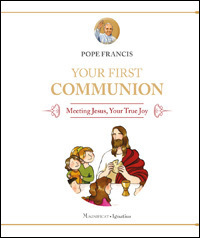 beautifully illustrated, high quality, Catholic children’s books. These charming books have captured the imagination of children of various ages through delightful full-color illustrations, exciting stories from the Bible and lives of the saints, and simple yet powerful prayers.
beautifully illustrated, high quality, Catholic children’s books. These charming books have captured the imagination of children of various ages through delightful full-color illustrations, exciting stories from the Bible and lives of the saints, and simple yet powerful prayers.
Due to the popularity if these books, two beautiful new titles have been added to the collection and are now available for purchase: Your First Communion: Meeting Jesus, Your True Joy and The Beautiful Story of the Bible.
Your First Communion: Meeting Jesus, Your True Joy
Based on the words of Pope Francis himself, Your First Communion: Meeting Jesus, Your True Joy, is addressed to young people preparing for their First Communion. They are words of wisdom and encouragement about the patient and enduring love of Jesus, who comes to us as bread to give us his own strength.
In words a child can understand, the Pope explains that not only in the Eucharist but also in the sacraments of Baptism and Confession we meet Jesus and receive his transforming love.
On every page children and their parents will discover that Jesus is indeed their true joy! This book includes pages where a child can write a prayer to Jesus and share memories of his or her First Communion.
The Beautiful Story of the Bible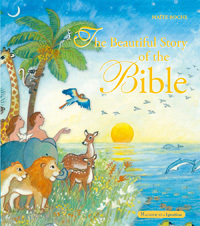
Here, in The Beautiful Story of the Bible, are all the most important stories of the Bible, Old and New Testaments, with very expressive and gorgeous pictures, sure to delight young children from 3 years old and up.
The Old Testament stories include Creation, Adam and Eve, Noah, David & Goliath, Moses and more. The New Testament stories include the whole story of the life and miracles of Jesus, and the lives of the Apostles and early Church, all presented in a wonderful way that shows God’s great love for mankind.
Ignatius Press is distributing these two new books to the general trade, to Catholic stores, through their catalogues and online at www.ignatius.com
Anthony Ryan, Marketing Director for Ignatius Press, says, “Our whole line of the lovely Magnificat – Ignatius Press books for children is full of a real variety of titles for all ages and on all topics. Several things that the books all have in common is the great beauty of each book, including the colorful, high quality illustrations throughout, combined with very good writing and exciting stories and adventures for children of all ages. These two latest titles are no exception.”
To request review copies or an interview with Vivian Dudro, Editor of these books, please contact:
Rose Trabbic, Publicist, Ignatius Press, (239)867-4180 or rose@ignatius.com
Children’s Books Product Facts:
Title: YOUR FIRST COMMUNION
Meeting Jesus, Your True Joy
Editor: Vivian Dudro
Release Date: November 2014
Length: 48 pages · Hardcover
Price: $16.99
ISBN: 978-1-58617-986-1
Title: THE BEAUTIFUL STORY OF THE BIBLE
Author: Maïte Roche
Release Date: November 2014
Length: 132 pages · Hardcover
Price: $19.99
ISBN: 978-1-58617-984-7
To Order: 1-800-651-1531 · www.ignatius.com
It's arrived: The Didache Bible, with commentaries based on the CCC
This Bible Belongs in Every Catholic Home
The Bible that every Catholic home needs.
View this email in your browser

It's arrived.
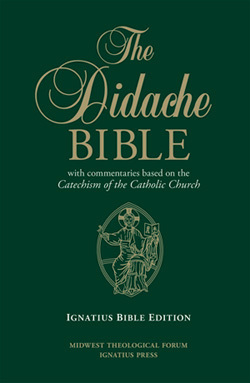
The Didache Bible
with commentaries
based on the Catechism
of the Catholic Church
Sewn Hardcover,
1960 pages, 6 x 9
$35.00
view sample pages here

Why should you buy yet another Bible?
Well, because...
It features extensive commentaries, based on the Catechism of the Catholic Church, for each of the books of the Holy Bible.
It includes numerous apologetical inserts to assist the reader in understanding the Church's teachings on current issues.
It uses the Ignatius Bible Edition (Revised Standard Version, Second Catholic Edition).
It has twenty-seven full-color biblical maps, including the journeys of Jesus Christ.
It includes a comprehensive, forty-three page glossary and a topical index.
It's useful for students and adults studying Scripture.
It's ideal for anyone seeking a deeper understanding of the Catholic Faith.
It's Accessible by all people in its level of scriptural scholarship.
Interested in more great Bibles and Bible related titles?
We've got you covered.
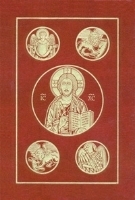
Ignatius Bible (RSV),
2nd Edition
Leather $39.95
Hardcover $31.95
Softcover $17.95
eBook $14.27
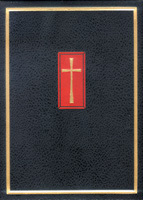
Catholic Family Bible (RSV)
$79.95
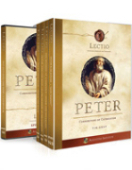
Lectio: Peter
DVD
$119.95
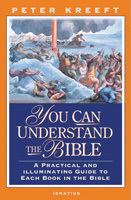
You Can Understand
the Bible
Peter Kreeft
$17.95
eBook also available.
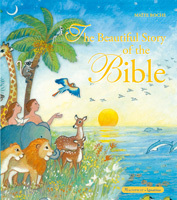
The Beautiful Story
of the Bible
Maïte Roche
$19.99
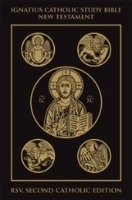
New Testament
Ignatius Catholic
Study Bible
Leather $44.95
Hardcover $34.95
Softcover $24.95
eBook $16.22
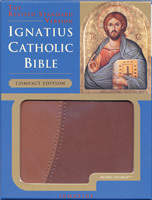
Ignatius Bible - Compact
(RSV)
$29.95
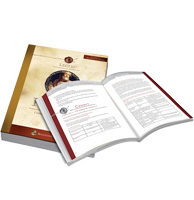
Lectio: Peter
Leader Guide
$49.95
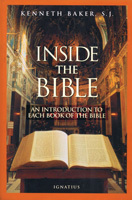
Inside The Bible
Fr. Kenneth Baker
$17.95
eBook also available.
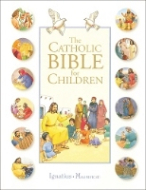
The Catholic Bible
for Children
$14.99
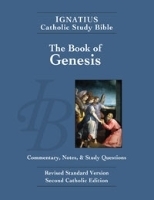
Ignatius Catholic
Study Bible Booklets
$9.95-$11.95
List of Booklets
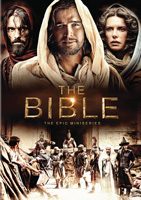
The Bible
DVD
$59.95
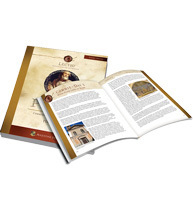
Lectio: Peter
Study Guide
$49.95
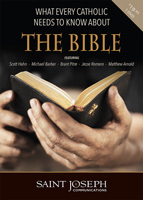
What Every Catholic Needs to Know
about the Bible
DVD
$19.95
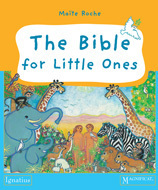
The Bible for Little Ones
Maïte Roche
$12.99



Website



YouTube
Copyright © 2015 Ignatius Press, All rights reserved.

Share

Tweet

Forward
January 26, 2015
Walk for Life West Coast: “Bigger, younger, and more energetic every year”

The crowd of Walkers at Civic Center Plaza, San Francisco (Photo: Darwin Sayo)
Walk for Life West Coast: “Bigger, younger, and more energetic every year” | Gibbons J. Cooney | CWR
The annual pro-life event, which drew an estimated 50,000 Marchers this past Saturday, is one of the five largest public events in San Francisco
On Saturday, January 24, downtown San Francisco echoed with pro-life chants, the rosary in English and Spanish, the Salve Regina, and joyful mariachi music at the 11th Annual Walk for Life West Coast. As always, the day began at 9:30 a.m. at St. Mary’s Cathedral, where Archbishop Salvatore Cordileone, joined by 11 brother bishops, celebrated the Walk for Life Mass. The Cathedral was over-packed, with nearly 5,000 people—standing room only. “Our goal is not simply to make abortion illegal,” Cordileone told the worshippers, “but to build a culture of life.” He took one of the themes of the youth in attendance and made it his own: “My young people, you are the prolife generation.”
Tens of thousands of pro-lifers overflowed the city’s Civic Center Plaza as the pre-Walk Rally took place. The invocation was given by Archbishop Carlo Maria Viganò, Apostolic Nuncio to the United States. The Archbishop also shared a message of thanks and support from Pope Francis to “…all who came out to the Walk for Life West Coast and all who supported it through their sacrifices and prayers.” The Holy Father called the inviolability of the right-to-life the “essential condition” for the building of a just society. The audience responded with cries of “Viva Papa!”
A poignant moment came at the presentation of the annual St. Gianna Molla award for pro-life heroism. The recipient was the late George Wesolek, who had served for years as the Director of the Office of Public Policy for the Archdiocese of San Francisco, and who was instrumental in the creation and success of the Walk. The award was presented to Wesolek’s grandchildren by Vicki Evans, the Director of the Pro-Life Ministry of the Archdiocese, and a decades-long friend of Wesolek.
Speakers included Julia Holcomb, who told the story of her abortion during a relationship as a teenager with Aerosmith lead singer Steven Tyler, and Rebekah Buell, a young woman who attempted to abort her second child with the abortion pill RU486.
Carl E. Olson's Blog
- Carl E. Olson's profile
- 20 followers



